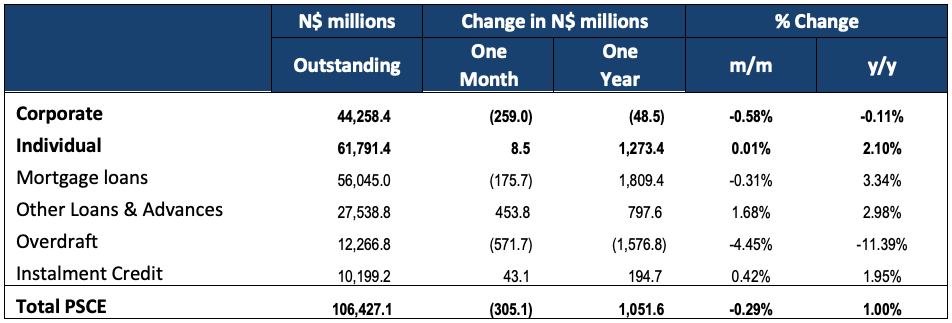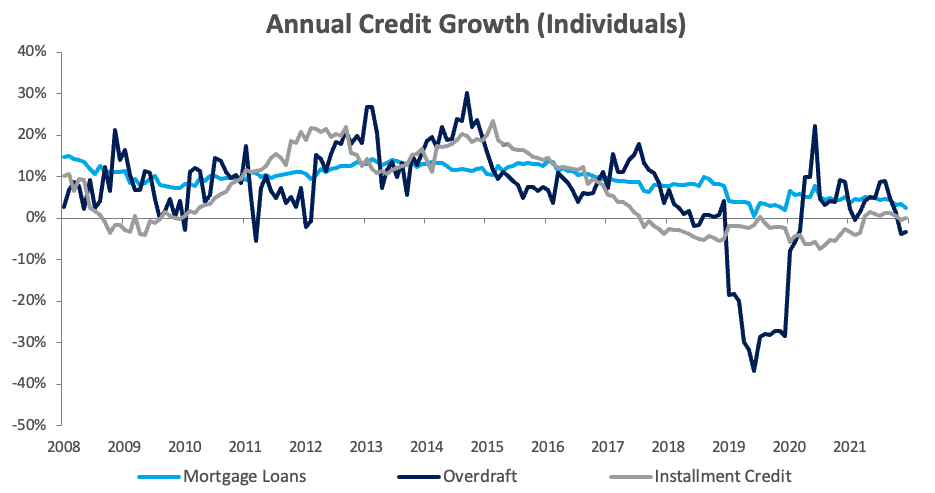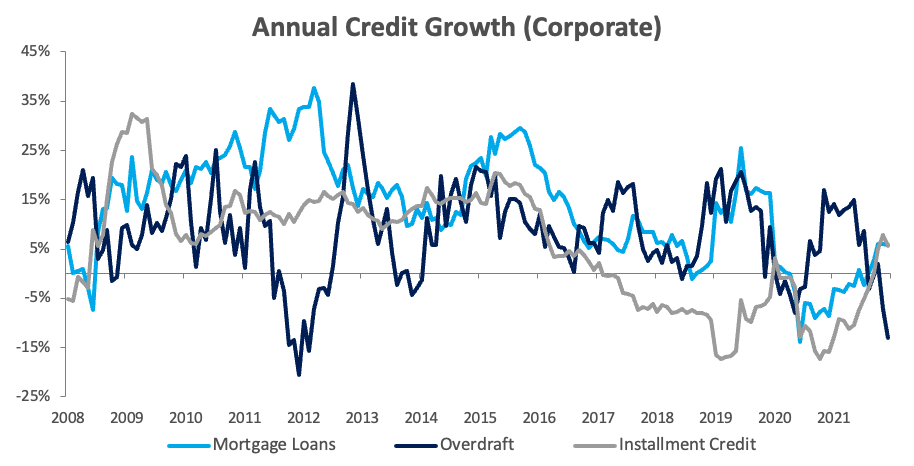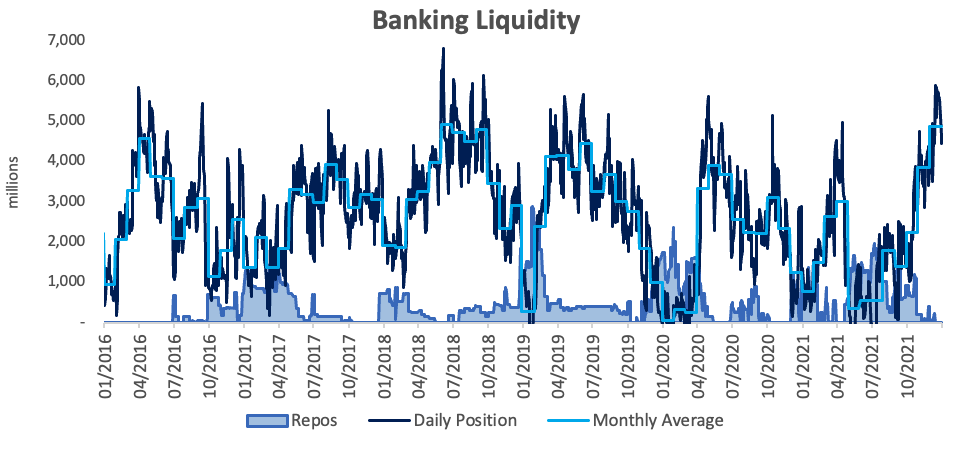
A total of 705 new vehicles were sold in January, which is 29 fewer than were sold in December, but represents a 1.7% y/y increase from the 693 new vehicles sold in January 2021. On a twelve-month cumulative basis, a total of 9,440 new vehicles were sold up to the end of January 2022, representing an increase of 23.7% from the 7,633 new vehicles sold over the same 12-month period a year ago. 2022 is thus off a somewhat better start than January 2021, however, new vehicle sales remain sluggish.

404 New passenger vehicles were sold during January, an increase of 11.6% m/m from the 362 sold in December, and 14.1% higher y/y from the 354 new passenger vehicles sold in January 2021. On a rolling 12-month basis, new passenger vehicle sales rose 38.6% y/y at the end of January, although the figure is from a very low base. 12-month cumulative passenger vehicle sales were down 53.9% from the peak in April 2015.

Commercial vehicle sales declined to 301 units in January, representing a contraction of 19.1% m/m and 11.2% y/y. During the month 266 light commercial vehicles, 5 medium commercial vehicles, and 30 heavy commercial vehicles were sold. On a year-on-year basis, light commercial sales fell by 11.6% y/y, medium commercial vehicles contracted by 44.4% y/y, and heavy and extra heavy vehicle sales grew by 3.4% y/y. Encouragingly, all categories have recorded growth on a twelve-month cumulative basis with light commercial vehicle sales increasing by 8.0% y/y, medium commercial vehicles rising by 19.2% y/y and heavy commercial vehicle sales growing by 27.3% y/y.

Toyota started the year off on a strong foot with a 37.6% market share of new passenger vehicles sold, followed by Volkswagen with a 21.0% market share. They were followed by Kia and Suzuki who each had a 7.7% and 5.9% market share, respectively, while the rest of the passenger vehicle market was shared by several other competitors.

Toyota also started the year off with a solid grip on the light commercial vehicle market with a 56.4% market share, with Nissan in second place with a 11.3% market share. Volkswagen and Ford claimed 7.5% and 6.0% of the number of new light commercial vehicles sold during the month, respectively. Hino was number one in the medium commercial vehicle category with 40.0% of sales, while Mercedes, UD Trucks and Volvo Trucks collectively led the heavy and extra-heavy commercial vehicle segment, each with a 16.7% market share during the month.
The Bottom Line
New vehicle sales started the year off stronger than the first month of the prior three years, but not materially so. As pointed out in last month’s report, the growth has largely been driven by a rebound in new passenger vehicle sales, with total commercial vehicles sales still hovering around 2009 levels. The relatively strong heavy commercial vehicle sales are however encouraging as it suggests that some fleets are being upgraded indicating business optimism. While we do expect to see new vehicle sales come in slightly higher than the prior two years as the economy starts recovering, we expect overall sales to remain sluggish and a far cry from the levels seen in 2014 – 2016.












